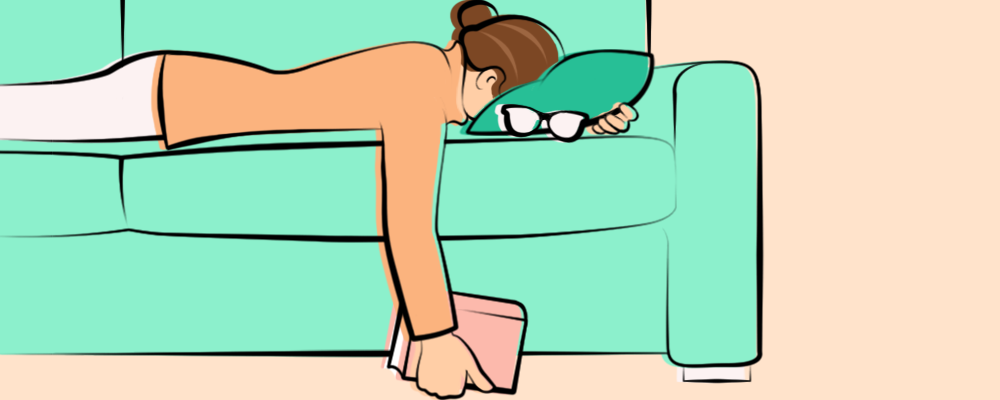Experiencing a migraine with aura can be extremely unsettling, especially when it’s your first time.
When the attack is at its worst, you may even convince yourself you’re experiencing a stroke. But while strokes do occur (impacting 15 million people each year), the chances are you’re worrying unnecessarily.
In this article, we’ll explore the warning signs of stroke and how these compare to migraine with aura — helping you recognize when you need to seek medical attention.
What happens during a stroke? And how does that compare to a migraine with aura?
When you’re in the midst of a migraine attack, the symptoms can feel unbearable and deeply concerning. But, when you begin to pull apart the symptoms of stroke and migraine with aura, you quickly see there are a number of important differences…
Symptoms of a stroke
Strokes occur when one of the brain’s blood vessels becomes blocked, bursts, or starts to leak. This prevents oxygen reaching the brain in its entirety.
As a result, parts of the body controlled by this affected area of the brain will begin to function improperly. People who experience a stroke will notice some of the following symptoms:
- A sudden inability to see out of one or both eyes
- The face will droop on one side
- Confusion, or difficulty understanding what others are saying
- Slurred or unclear speech
- Loss of coordination and/or balance
- Difficulty walking
- Smiles will be uneven
- Numbness on one side of the body
Symptoms of a migraine with aura
Whilst the exact causes of migraine with aura aren’t yet understood, it’s believed that it is caused by a contraction of the blood vessels at the beginning of the aura phase.
Migraines may have genetic causes, too, often affecting multiple members of the same family.
Common symptoms of a migraine with aura include:
- Numbness and/or tingling sensations
- Lights flashing before the eyes
- Temporary bouts of blindness
- Tunnel vision
- Seeing colored spots
- Blind spots reducing the field of vision
- Stars and/or sparkles affecting eyesight
- Dizziness
- Vertigo/a spinning sensation
- Weakness in one side of the body
These symptoms tend to develop gradually, whereas a stroke will come on quickly and without warning.
What’s more, aura symptoms typically last around one hour or less before the headache sets in, and will fade away with no long-term physical effects.
So what’s the connection between migraine with aura and stroke? How big is the risk?
Research into the link between migraines and strokes has led to findings that should provide some reassurance.
Although it’s believed people affected by migraine with auras have twice the risk of suffering a stroke as others, this danger ultimately still remains low. Strokes are more likely to be caused by such common factors as high blood pressure and smoking, rather than a history of migraines.
This means that leading a healthy lifestyle, managing stress effectively, and avoiding harmful habits may all help reduce the danger of a stroke.
Other studies have revealed the following groups are at a slightly higher risk of stroke:
- Migraine-sufferers below 45 years of age
- People who smoke and experience migraine with aura
- Women taking oral contraceptive pills and who suffer from migraine with aura
However, the danger still appears to be extremely low in these groups.
For example, only 8 women in 100,000 who have migraine with aura are at risk of a stroke, and only 28 per 100,000 women who take the oral contraceptive pill and experience migraine with aura face this risk.
So, it’s important to try not to worry about the risk of stroke if you experience migraines with aura. The chances are very low, and the stress caused by the worry isn’t going to help overcome the migraines.
Keep calm, and keep note of what your migraines usually feel like. And if you do notice any differences, consult medical advice to remove any anxiety or fear, and to rule out anything other than a migraine.
How to identify a stroke
The test below provides some guidance on how to recognize a stroke. However, it cannot replace professional medical help. So if you experience sudden unfamiliar symptoms you should consult a specialist immediately.
The FAST test
A migraine may be mistaken for a stroke which is created by bleeding on the brain (subarachnoid hemorrhage, or SAH), typically manifesting as a sudden, intense headache and possible neck stiffness.
But a migraine causes a throbbing pain on one side, doesn’t make the neck feel stiff, and passes more quickly than SAH.
The visual distortions and sometimes dizziness that accompany a migraine with aura may leave sufferers afraid they’re experiencing a stroke. There’s a well-known checklist for determining whether someone is having a stroke or not, referred to as the ‘FAST test’.
- Face: is the person able to smile, and has their face dropped on one side?
- Arms: can they lift both their arms and leave them elevated?
- Speech: are they capable of speaking clearly and understanding what others around them say? If they do manage to speak, are their words slurred?
- Time: if any of these symptoms are present, it’s time to seek immediate medical attention
This test is easy to remember and an effective way to differentiate between a stroke and a migraine with aura. While the latter may cause some speech difficulties and dizziness, the symptoms of a stroke are more severe.
If you believe yourself or someone else is having a stroke, you should call for an ambulance immediately.
Understanding the differences will help keep you safe
Understanding the difference between migraine with aura and stroke can provide real peace of mind when it matters most.
For example, anyone concerned about their likelihood of experiencing a stroke should try quitting smoking, maintaining a stable blood pressure, and leading a healthier lifestyle overall.
For further preventative measures, you should speak to your doctor or other health care support team. Remember, you don’t have to suffer alone or in silence — there will be a solution out there that can help you, you’ve just got to reach out for the right advice.




